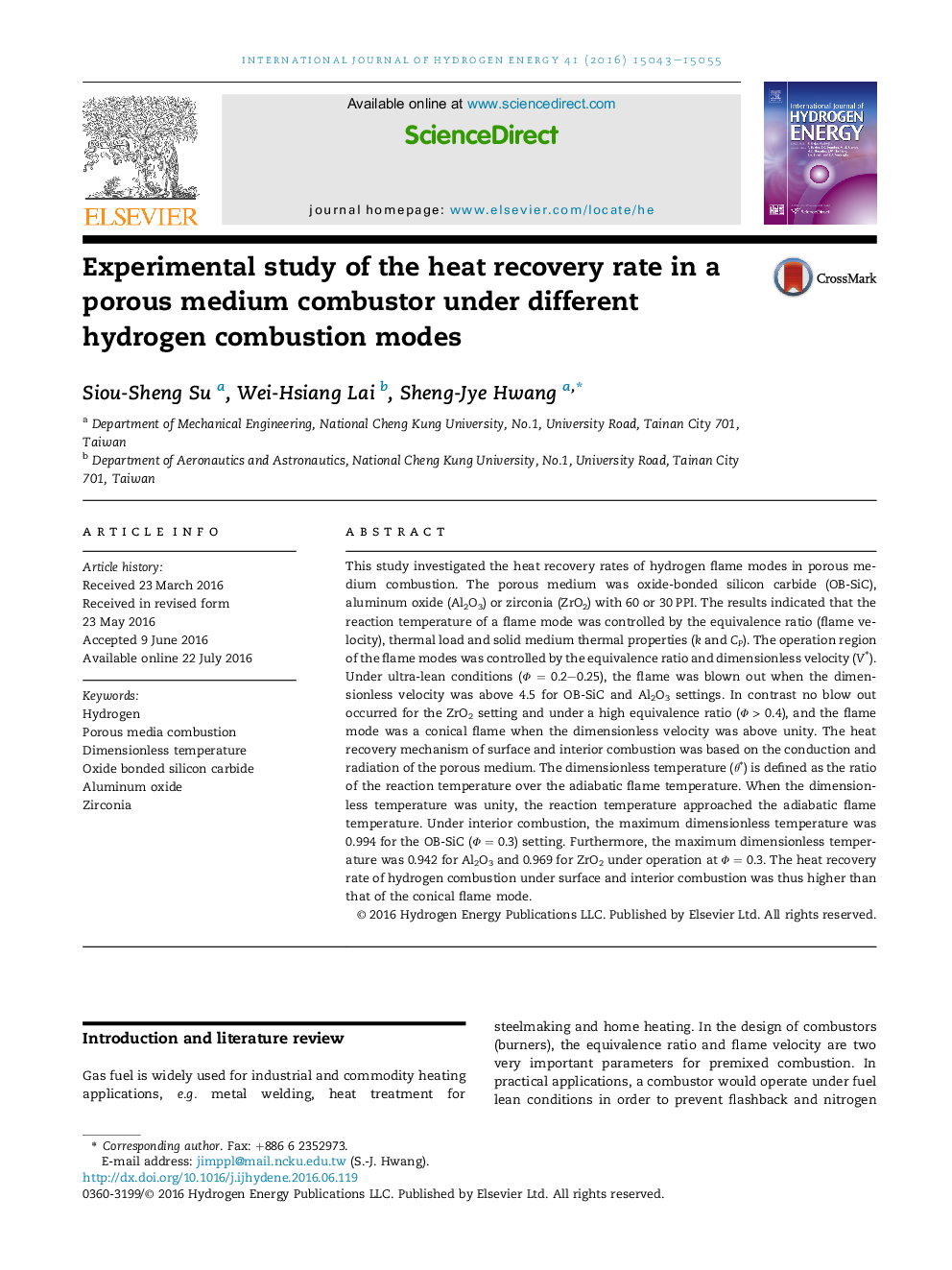| Article ID | Journal | Published Year | Pages | File Type |
|---|---|---|---|---|
| 1269379 | International Journal of Hydrogen Energy | 2016 | 13 Pages |
•The porous media were oxide bonded silicon carbide, aluminum oxide and zirconia.•The heat recovery rate of surface and interior combustion is higher than that with a conical flame.•The flame was blown off for OB-SiC and Al2O3 setting under a low equivalence ratio and a high dimensionless velocity.•The reaction temperature approached the adiabatic flame temperature.
This study investigated the heat recovery rates of hydrogen flame modes in porous medium combustion. The porous medium was oxide-bonded silicon carbide (OB-SiC), aluminum oxide (Al2O3) or zirconia (ZrO2) with 60 or 30 PPI. The results indicated that the reaction temperature of a flame mode was controlled by the equivalence ratio (flame velocity), thermal load and solid medium thermal properties (k and CP). The operation region of the flame modes was controlled by the equivalence ratio and dimensionless velocity (V∗). Under ultra-lean conditions (Φ = 0.2–0.25), the flame was blown out when the dimensionless velocity was above 4.5 for OB-SiC and Al2O3 settings. In contrast no blow out occurred for the ZrO2 setting and under a high equivalence ratio (Φ > 0.4), and the flame mode was a conical flame when the dimensionless velocity was above unity. The heat recovery mechanism of surface and interior combustion was based on the conduction and radiation of the porous medium. The dimensionless temperature (θ∗) is defined as the ratio of the reaction temperature over the adiabatic flame temperature. When the dimensionless temperature was unity, the reaction temperature approached the adiabatic flame temperature. Under interior combustion, the maximum dimensionless temperature was 0.994 for the OB-SiC (Φ = 0.3) setting. Furthermore, the maximum dimensionless temperature was 0.942 for Al2O3 and 0.969 for ZrO2 under operation at Φ = 0.3. The heat recovery rate of hydrogen combustion under surface and interior combustion was thus higher than that of the conical flame mode.
